Storage Systems Options – Storage Pallet Rack: Every company faces unique situations when considering their warehouse storage and design options.
- This can include:
- Expanding an existing location
- Opening a facility in a new market
- Adding more products and services
- Offering new sales channels such as e-commerce or direct-to-consumer
The essential purpose of a pallet racking system is to support the largest load possible in relation to its self-weight while maintaining ready access to individual pallets and preventing damage to stored goods.
In general, the design is complicated by the semi-rigid nature of beam/upright and upright/floor connections, and by the use of perforated upright members in large, multistorey sway frames.
Facility changes come down to different types of storage solutions for product handling, manipulation, or picking.
Even though companies face a variety of unique situations, the same challenge still exists for all of them: implementing physical and operational changes without affecting the customer.
Typically, in warehouses and distribution centers, facility changes come down to different types of storage solutions for product handling, manipulation, or picking.
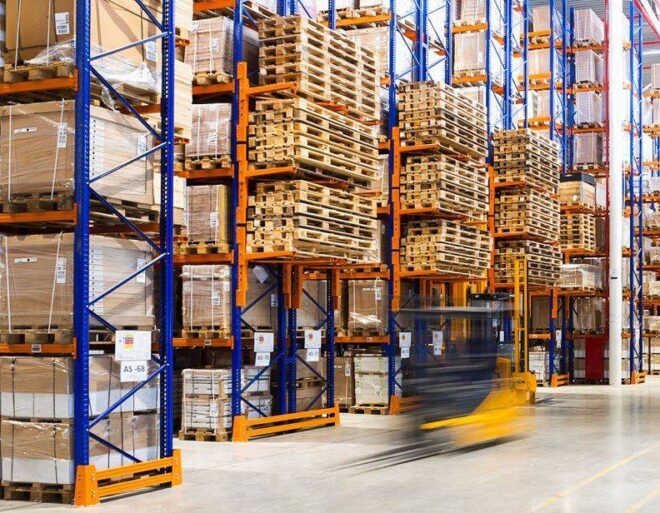
Storage pallet racks system
The most common types of storage solutions come from four categories:
- Bulk Storage
- Pallet Rack
- Shelving
- Carton Flow
When planning for these different systems, you need to ensure that whichever you choose, they fit well in the footprint of your facility. Often times, building internals are overlooked in place of overall square footage. This can lead to a lot of underutilized space.
Ideally, the storage systems would be identified and designed prior to the selection or building design, however, this isn’t always possible. When selecting a building for your next facility location, keep in mind these considerations:
- Building Column Layout
- How does the layout relate to the aisles and major equipment design?
- Building Clear Height
- Are you allowing for any useable vertical space below the roof or ceiling?
- Overall Square Footage
- How much useable floor space will you have?
- Permanent and Semi-Permanent Obstructions
- Does your new facility have HVAC, offices, electrical, sprinklers, lighting, etc.?
- The simplicity of Building Layout
- Keep in mind that a rectangular building is typically more conducive to efficient storage design than one that has large square footage through multiple build-outs.
- Dock Door Placement
- Where are the dock doors located in relation to the rest of the space?
- Environmental Factors
- How are the airflow, humidity, and other environmental factors?
If you keep these tips in mind, it will be much easier to get a facility that meets your unique needs and maximizes space and efficiency.
- When making changes to your warehouse or distribution center to maximize space, you usually have four storage system options:
- Bulk Storage
- Pallet Rack
- Shelving
- Carton Flow
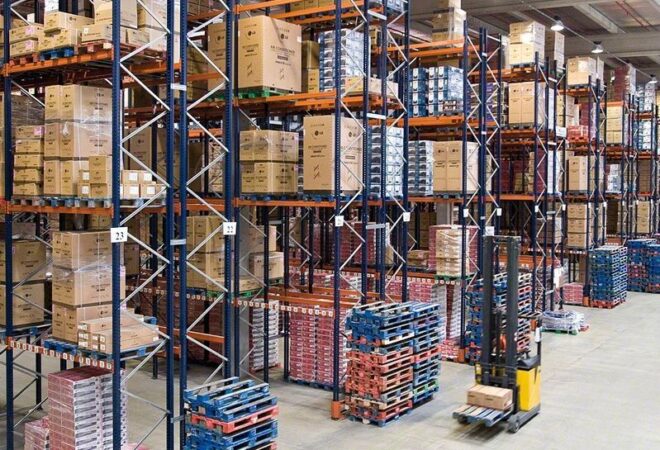
Bulk storage racks
Bulk storage is also known as “floor stacked” and is the most basic form of warehouse storage. It consists of no physical storage system other than the building’s square footage.
Products are stored directly on the warehouse floor and are typically arranged several pallets deep and are possibly stacked depending on the type of product.
- This method is low in cost and is ideal when:
- Pallets are stackable
- Ceiling height prevents vertical racks
- Products are not sensitive to (FIFO) First-In-First-Out sequencing
- Storage density is not a concern
- With these benefits, though, come to some challenges as well, such as:
- Low space utilization (60-70%) since vertical space is not effectively used
- Increased possibility for product damage due to stacking
- Inefficient product location and picking due to cumbersome product access and poor product location identification.
Bulk storage is usually a starting point for facilities before they move into some of the other storage system options.

Industrial Pallet Racks
Pallet racking consists of a set of upright frames connected in various ways by horizontal beams to provide storage for the palletized or non-palletized products depending on the rack configuration and beam supports used.
- There are five basic types of pallet racks:
- Drive-In/Drive-Thru
- Selective
- Pallet Flow
- Pushback
- Cantilever
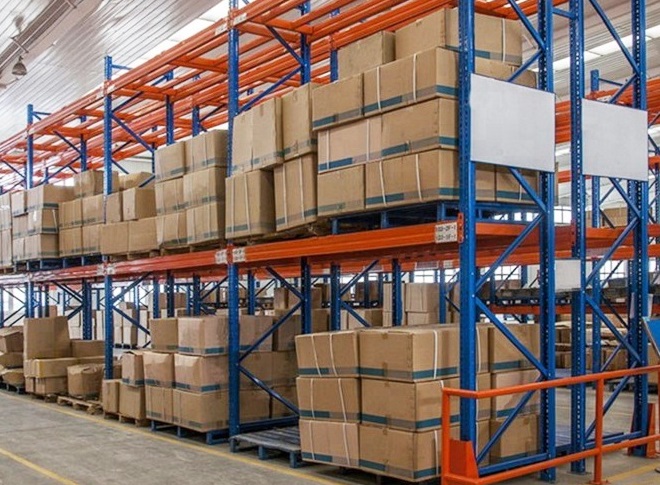
Drive-In/ Drive-Thru
The drive-in/drive-thru pallet racking consists of a multi-level system of rails forming several levels of continuous pallet storage.
It can be installed as a drive-in system, which is accessible for product delivery and retrieval from only one side (LIFO) LastIn First-Out. It can also be installed as drive-thru, which typically delivers the product to one side and retrieves it from the opposite thereby preserving FIFO sequencing.
This type of storage is used when storage density desired is high (potentially 85%) and SKU base is low. It is well suited for refrigerator or freezer environments where square footage costs are significantly higher. This is why this type of pallet storage is often used in the grocery industry.
- Challenges with this storage system include:
- It requires highly skilled forklift drivers since they enter the rack system every time they deliver or retrieve products.
- It also requires quality pallets since they reside on rails that suspend them on each end.
- There is no easy access to the internal pallets leading to trapped product
- The system is designed for specifically sized pallets and cannot be easily modified to accommodate larger or smaller width pallets.
- There is an increased potential for injury and damage due to forklift impact.
When deciding on this type of storage, it is best to keep in mind your inventory receiving and delivering process, the number of SKU’s, and your FIFO and LIFO product needs.
Selective Pallet Racking
Selective pallet racking comes in two varieties: single or double deep. Single deep selective racking is the most common type of pallet racking in use and is one of the least costly types of basic storage.
This is the type of racking used in many popular warehouses, such as Home Depot, Lowes, and Costco. Single deep also offers access to every location giving users flexibility in product storage and retrieval.
Though single deep is flexible and at a low cost, it comes at the cost of space utilization. This can only be regained through the use of higher lift technology to reduce aisle space. It is best used when:
- 100% access is required or desired
- Large numbers of SKU’s are handled relative to a total storage
- Access trumps cube utilization
On the other hand, a double deep selective rack allows for better space utilization and is no more costly per pallet location than a single deep rack. However, it should only be used if storage density is more important than 100% access since the product can become trapped and require additional labor to maneuver. This type of racking also requires specific lift equipment that can retrieve pallets from double-deep locations.
Pallet Flow Racking
Pallet flow systems consist of a rail or conveyor system installed in a pallet rack that can be 20 or more pallets deep. There are many versions of the flow mechanism, but the basic premise is to feed pallets in one end and pick them up on the other.
Typically some sort of speed restrictor is installed in deeper systems to prevent impact damage.
- These systems provide the density and FIFO storage possible with drive-thru without the requirements to drive into the rack system. It is used when:
- SKU count is low
- FIFO is desired
- Square footage is tight
It is significantly more costly than single deep or drive-thru racking and requires the use of quality pallets to prevent the product from hanging up in deep locations.
Pushback Pallet Racking
Pushback pallet racking consists of carts installed into pallet racks. The carts are stacked and allow for storage of up to six pallets deep, although they most typically are no more than four pallets deep.
The product is placed on a cart and then pushed back when the next pallet is placed in front of it. This is done until the final cart is pushed back and the last pallet is stored onto the rack beam. When a pallet is removed, the successive pallets move forward because the carts are installed on a slight decline toward the front beam.
This system provides high storage density and is used when deep storage is desired near a wall or for medium turnover products with multiple pallets per SKU.
This storage system is also used when LIFO is an acceptable means to rotate inventory. Pushback racking is typically the most costly type of manual pallet storage.
Cantilever Pallet Racking
Cantilever racking is a very specific type of racking used extensively in the furniture and lumber industry for long products that are better supported by arms instead of beam levels.
Cantilever must be designed specifically for the products they support and may require special considerations based on product size, weight, and rigidity
Shelving pallet racks
Much like, pallet racking, shelving is made up of upright frames, but instead of being connected by horizontal beams, they are connected by shelves. These are typically used for lighter, smaller items when pallets are not required.
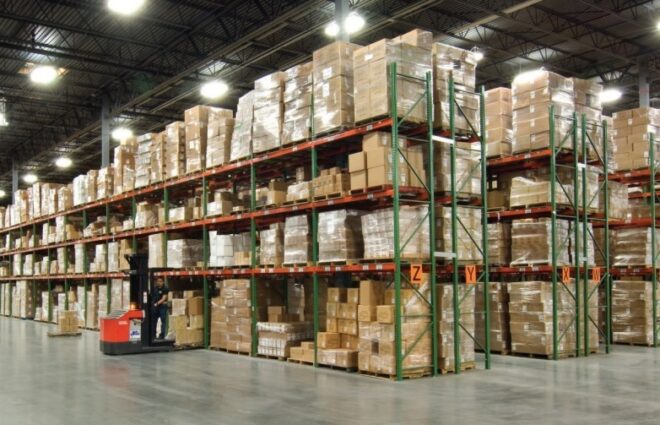
Wide Span Shelving
Wide Span Shelving is typically a lighter duty version of a standard pallet rack. It provides the same versatility, access, and sizing as selective pallet racking, but is used when the overall capacity stored is less than light-duty pallet rack standards.
This shelving isn’t typically designed for pallet storage, but is ideal for cartons, hand stacked storage, bin or tote storage, etc.
Wide-span shelving is most common in a loose pick, totes, and small-item storage. It can also be stacked to form shelf supported mezzanine structures that can maximize vertical storage.
Industrial Shelving
This type of storage offers multiple levels of storage or picking in a relatively small footprint. These shelves typically store anywhere from 300 to 1,000 pounds per shelf level. They can incorporate dividers, drawers, and many other accessories that augment the product stored.
Industrial shelving is extensively used in the automotive and electronics industries for small parts picking. It is also versatile and can be stacked to form multi-level mezzanine supports.
It is less durable than pallet rack or wide span shelving, but is significantly less costly per storage location.
Carton Flow racks
Carton Flow is a form of shelving that uses gravity feed rear-load design. This storage system helps to keep the product more organized because it is automatically rotated on a FIFO basis.
- The decision to use carton flow depends on many factors such as:
- Overall footprint available
- Consistency of product sizes and weights
- SKU quantity
- SKU velocity
The size, weight, and consistency of your merchandise will determine which type of carton flow is best for your application. There is a big difference in carton flow requirements for a warehouse that picks products from consistently sized and weighted boxes or containers, and a warehouse where size and shape vary greatly.
- There are a few basic types of carton flow including:
- Wheel Track
- Full-Width Roller
- Skatewheel
Any of these types of carton flow can be configured as either standalone units or rows integrated into an existing storage system.

Wheel Track Carton Flow
Wheel track carton flow consists of a frame or shelf assembly, wheel tracks or rails, and dividers, which are most likely full length and adjustable. The frame is welded, bolted, or bracketed, and the wheel tracks are typically about 1” wide roll formed channels with integrated plastic wheels on roughly 2” centers. These wheels may or may not have
axles.
Wheel tracks are a very useful type of carton flow in that:
- Their wheel tracks and dividers are adjustable so you can modify the carton flow as your product mix changes.
- The tracks and dividers are not part of a composite unit, so they can be replaced as they degrade or are damaged.
- The shelves can integrate many types of accessories for product presentations, such as knuckle over trays.
- The shelves are not bound by the depth of the storage media, allowing for ergonomic shelf positioning or excess depth where applicable.
- Additional tracks may be added to allow easier product travel.
Though there are many benefits to wheel tracks, there are also some drawbacks, such as:
- The wheels can bind or eventually cause friction that reduces product flow. The boxes may conform to wheels in high humidity environments depending on the product type, resulting in hang-ups.
- The tracks can be difficult and time-consuming to adjust once installed, especially when some presentation accessories are also present.
- Adding additional tracks to allow smoother product conveyance quickly adds incremental cost to each pick line.
- This system also has a limited width since the entire assembly must be supported by the shelf or frame the tracks are attached to. Typically the system will have 96” wide shelves, but sizes approaching 144” can be challenging especially with heavier products.
- A small amount of pickable space is lost in both depth and width due to the use of shelf structure for primary support.
Full-Width Roller Carton Flow
The full-width roller carton flow typically consists of gravity roller conveyor tracks of varying widths, roller centers, and capacities.
As with wheel track, it relies on pallet rack or standalone supports to provide the structural support, but typically uses standard pallet rack beams as the primary means for installation.
Tracks can either be confined to the depth of the racking using rack beams as end stops or mounting areas for accessories, or attach on top of the beams allowing for more depth, ergo, and accessory options.
Some require brackets that allow the track to be attached to the beam and others simply lay in place and are secured as is.
Deep lane applications may require additional beams for support above and beyond the infeed and discharge zones, although this is typically accomplished through the use of intermediated beams within the normal pallet rack structure.
Some manufacturers may also provide a shelf or frame that allows accessories to be installed and depth adjustment beyond beam support.
- Some advantages to the full-width roller include:
- They provide more surface area contact and may provide better conveyance for products with flimsy bottoms or in high humidity environments.
- The width is only confined by the total bay width and beam capacities if no support shelf or frame is used.
- This results in no lost pickable space
- The roller centers and track widths can be modified to strike a balance between cost and functionality. Some products overhang is allowable.
- Tracks are easy to install as a new product or in a retrofit. This typically involves infeed and discharge brackets and a lay-in section of conveyor for rack beam installation.
- In addition to these advantages, full-width rollers also have some drawbacks, such as:
- The specific width means you are limited in the size of the product you can accommodate if a business changes. They may be too large or too small as things change.
- Cost is typically higher per bay than wheel track applications.
- There is no ability for width adjustments once installed. Tracks are fixed width so the new product is required if changes are desired.
Skatewheel Carton Flow
Skatewheel carton flow blends the concepts of both full-width roller and wheel track into a fixed-width bed of skate wheel.
Its beds can be inserted to cover the entire bay width so that no gaps are present. Lane entry guides or full-length dividers are used to separate lanes. The wheels can be aligned or staggered depending on the manufacturer and are typically much larger than those on wheel track rails. Wheels ride on an axle and are held in place in various ways.
- Skatewheels offers many benefits as a storage system, including:
- There is no loss of pickable space since the entire bay is one big carton flow section.
- The lane entry guides are adjustable to accommodate any product size or changes.
- The number of wheels per foot can typically be adjusted by changing the axle centers, which mitigate costs.
- It has larger wheels which provide less friction and more alignment with the full-width roller surface area. This lessens the chances of boxes forming around the wheels in high humidity.
- This system is also very easy to install.
- With these many benefits, though, come some drawbacks, such as:
- Higher costs due to its full bay coverage, number of wheels, and larger axle sizes than other options.
- The product may skew during transit if the entry guides are not full length.
- Depth is usually limited to beam to beam depth of the pallet rack unless using a standalone rack.
Pallet rack safety
Rack Safety Tips:
One of the most overlooked areas of warehouse layout is safety guarding for people and for the storage products themselves. The question isn’t if you are going to incur damage to your rack storage system, it’s when.
Almost every warehouse will experience some level of damage based on the level of complexity of the building and storage layout, the experience of lift drivers, aisle width, type of lift, type of product, etc.
Here are some safety tips to keep in mind for prevention:
- Consider installing pallet rack guarding: The incremental cost of using pallet rack guarding will typically pay for itself fairly quickly by preventing more costly damage to the structural components of the system.
- Utilize floor mounted column protection: Unless you are using self-guided lifts that are highly unlikely to impact your rack system, you will need a barrier between your equipment and your pallet racks. Installing floor mounted column protectors can protect your racking from being damaged.
- To provide the most protection, protectors with internal anchors are preferred because they absorb the impact so that the pallet racks do not. It is much easier to replace guarding than it is to replace a pallet
rack system.
Warehouse racking safety standards
Though internal anchors tend to be more labor-intensive, they don’t cause the damage to forklift wheels that exposed anchors do. This results in less time spent maintaining the wheels.
- Use full-length end-of-aisle guarding: Full-length end-of-aisle guarding in high traffic areas provides a visual and physical barrier to lift equipment. These areas, along with tunnels, are at greater risk of impact, so they are well worth
protecting. - Ensure transition points are well lit and clearly marked: Making sure that all transition points for lift equipment are well lit, visually clear, and marked appropriately helps even inexperienced operators clearly understand traffic patterns.
- Installing double highway rails: Double highway rails are used to separate operational areas where personnel and powered lift equipment operate in close proximity. Handrails may provide a visual deterrent in these areas, but highway rails are more likely to prevent major accidents.
- Maintain a rigorous training program: A rigorous training program ensures all operators are qualified to operate their respective lift equipment an use its associated safety equipment.
By keeping these tips in mind, you can prevent damage to your racking and ensure that your operators are practicing safe driving procedures.
The most read
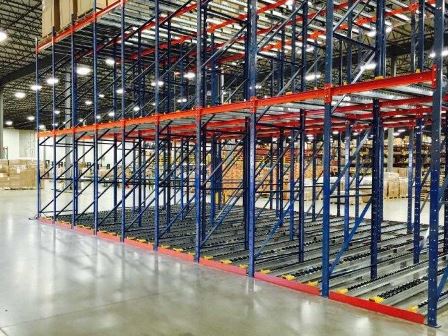
Pallet Racking Types
Pallet racking is a material handling storage rack system designed to store products and materials on pallets in horizontal rows and on multiple levels. Most warehouses prefer using pallet racking systems to maximize the storage space they have available.

Pallet Rack Inspection checklist
Few warehouse operators have aggressive in-house rack inspection programs in place. Forklift accidents, collisions, dropped or misplaced loads, and other incidents that result in rack damage may or may not get promptly reported.
